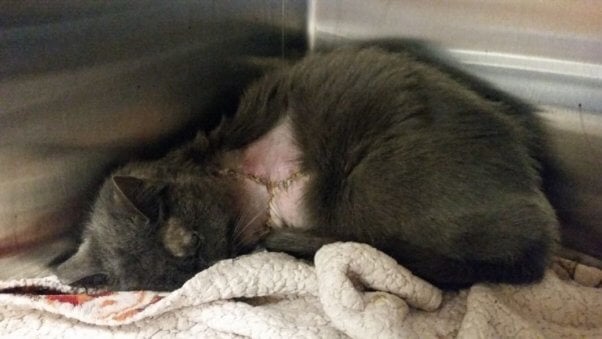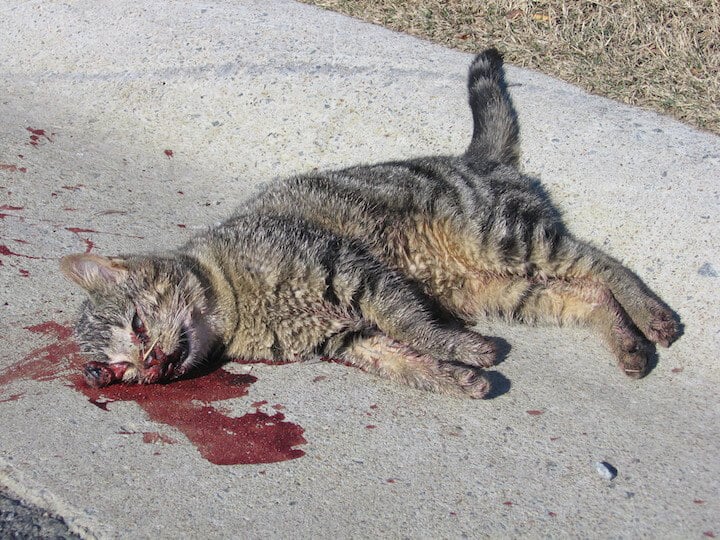Cat Found With Leg ‘Hanging on by a Hair’ Is Latest Victim of TNR
“No animal needs to ever experience this.”
That’s what Marcie Garcia said after finding a cat she named Miracle crouching in the parking lot of her workplace, with one leg nearly severed and “hanging on by a hair.”
“At first glance I could tell she was way underweight, in pain and scared,” Garcia said. She scooped up the cat and rushed her to the vet, who had to amputate the mangled leg.

Miracle’s tipped ear gave away an important part of her story: She had been trapped, spayed, ear-tipped, and released—or, more accurately, re-abandoned—to fend for herself on the streets. As with most cats involved in trap-neuter-release (TNR) programs, the streets had not been kind to her.

Nor were they kind to Marley, an ear-tipped feline who was hit by a car before thankfully being discovered by a passerby. The kind stranger took him to a cat-adoption group that made sure that he got medical treatment. “We’re big advocates of keeping cats inside,” says the group’s founder. “All of that, most of the time, wouldn’t happen if they were just inside.”
The streets also weren’t kind to Pumpkin, a kitten who was dumped outside by a TNR program before luckily being taken in by a kind woman who found that the animal was suffering from an upper respiratory infection, an eye infection, internal parasites, and a staph infection. He’d been neutered, ear-tipped, and abandoned on the streets two weeks before he was found.
Ear-tipped cat Stormy was rescued after being stuck in a drainpipe for four days and nearly drowning. Ear-tipped kitten Little Orange was discovered malnourished, dehydrated, weak, missing fur, and covered with scabs.

PETA’s Community Animal Project regularly comes to the aid of homeless cats who are stuck in trees, car engines, sewers, and countless other dangerous locations; have been struck by cars or attacked by other animals; are dying of deadly contagious diseases, such as feline leukemia; and have been abused by cruel people who are annoyed when the animals dig in their yards or climb on their cars.
Many so-called “feral” cats are actually quite tame, which means that they could be a humans lost companion. But they’ll almost certainly never be reunited with their guardians if they’re re-abandoned outdoors instead of taken to a shelter. Friendly cats are also easier targets for cruel humans bent on harming them.

Most “outdoor cats” survive an average of only two to five years, about 10 years less than the average “indoor cat.” Kittens’ odds are even worse: They usually survive for less than six months. Trapping, neutering, and abandoning homeless cats doesn’t “save” them—it merely transfers their deaths (assuming that they aren’t adopted and must be euthanized) from the comfort of a shelter to the misery of the streets.

What You Can Do
Urge your local shelter not to doom cats to short, miserable lives outdoors with trap-and-abandon programs and instead to treat them with the same respect and care as dogs by accepting all who are unwanted. Also, urge your local city council to stop feline homelessness at the source by requiring that all cats be spayed or neutered, licensed, microchipped, and kept indoors.
